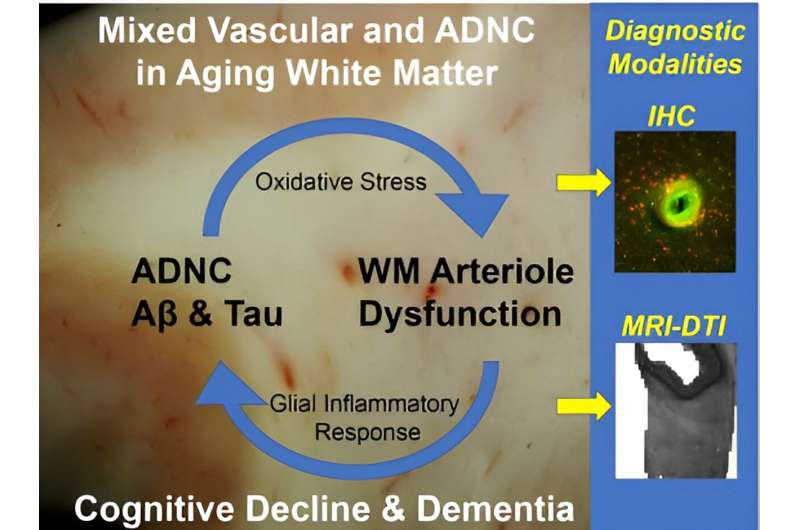This article has been reviewed according to Science X's editorial process and policies. Editors have highlighted the following attributes while ensuring the content's credibility:
fact-checked
proofread
Study reports on contributions to white matter injury in Alzheimer's disease

A new editorial paper titled "Microvascular contributions to white matter injury in Alzheimer's disease" has been published in Aging.
In their new editorial, researchers Zsolt Bagi, Larry S. Sherman and Stephen A. Back from Augusta University discuss mechanisms of cognitive impairment and dementia. Impairments in cognitive and executive function of presumed cerebral microvascular origin are important and recently recognized neuropathological manifestations of vascular contributions to cognitive impairment and dementia (VCID).
It has been long known that hypertensive cerebrovascular disease also involves a spectrum of subcortical small vessel diseases, such as arteriolosclerosis and lipohyalinosis of small penetrating arterioles, which contribute to progressive injury of periventricular, frontal and parietal white matter (WM).
"However, until recently, recognition of the role of WM injury during aging and the progression of Alzheimer's disease and related dementias (AD/ADRD) was very limited," the researchers explain.
Despite growing interest in VCID and AD/ADRD, there have been few studies of mechanistic links between subcortical small vessel disease, WM injury and cognitive decline. Even though WM constitutes >80% of the human cerebral hemispheres, a PubMed search of AD and WM injury yielded only 381 articles (including reviews) vs. 193,303 articles for AD alone.
Notably, 50% of diagnosed AD patients have mixed vascular and AD pathology. Hence, there is a critical need to explore connections between AD, WM injury and cerebral small vessel disease to define mechanisms and diagnostic features of mixed vascular and AD neuropathological change (ADNC).
"To provide rigorous access to human WM lesions, we recently developed a unique rapid autopsy brain procurement protocol using specimens donated by participants in the Adult Changes in Thought (ACT) study, a prospective, population-based study of aging and incident dementia among men and women in Seattle, Washington," write the researchers.
More information: Zsolt Bagi et al, Microvascular contributions to white matter injury in Alzheimer's disease, Aging (2023). DOI: 10.18632/aging.204997



















